
From the
LDS
Church Ensign Magazine, April 1992, page 12:
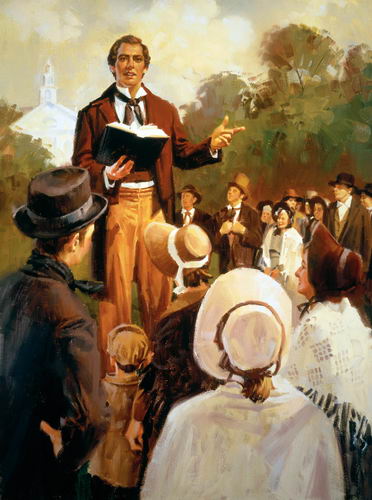 "The dedication of the
Kirtland Temple in March of 1836 represented the greatest
spiritual outpouring in modern Church history. Joseph wrote
that, shortly after the dedicatory prayer was offered,
“Frederick G. Williams arose and testified that
[during the prayer] an angel entered the window and took his
seat between Father Smith and himself. David Whitmer also
saw angels in the house.”" "The dedication of the
Kirtland Temple in March of 1836 represented the greatest
spiritual outpouring in modern Church history. Joseph wrote
that, shortly after the dedicatory prayer was offered,
“Frederick G. Williams arose and testified that
[during the prayer] an angel entered the window and took his
seat between Father Smith and himself. David Whitmer also
saw angels in the house.”"
"Later,
“Brother George A. Smith arose and began to prophesy, when a
noise was heard like the sound of a rushing mighty wind,
which filled the Temple, and all the congregation
simultaneously arose, being moved upon by an
invisible power; many began to speak in tongues and
prophesy; … and I beheld that the Temple was filled with
angels.”"
"Of one
of the concluding meetings, Joseph wrote, “The
Savior made his appearance to some, while angels ministered
to others, and it was a Pentecost and an endowment
indeed, long to be remembered, for the sound shall
go forth from this place into all the world, and occurrences
of this day shall be handed down upon the pages of sacred
history, to all generations.”"
According
to the official web site of the
LDS Church, in the spring of 1820, Joseph Smith offered a
simple prayer that set into motion a series of events leading
to the restoration of the true Church and the truth about
life’s greatest questions.
But for
many early LDS coverts, learning about truth was a second rank
endeavor. Instead, seeking for a personal visionary experience
was primary. According to LDS scholar, Richard Bushman, early
Mormon converts were “seekers” whose
 … greatest hunger was for
spiritual gifts like dreams, visions, tongues, miracles, and
spiritual raptures. … greatest hunger was for
spiritual gifts like dreams, visions, tongues, miracles, and
spiritual raptures.
(Bushman,
R. L. (2005). Joseph Smith: Rough Stone Rolling. New York:
Alfred A. Knopf. p. 113,
147)
These early Church
members sought direct experience with God and believed that
Joseph Smith had the power to grant their desires. Confidence
in their Prophet was not misplaced. Between 1830 and 1836,
under the supervision of Joseph Smith, many early Mormon
converts enjoyed heavenly visions and spiritual raptures.
However, after Joseph’s death in 1844, the great visionary
period of Church history came to an end.
Twenty
years later, in 1864, members would ask Church leaders, “why
it is that we do not see more angels, have more visions, that
we do not see greater and more manifestations of
power?”
The
mystery seems to center around Joseph Smith himself. According
to church historian Richard Bushman, it was Joseph Smith
himself that connected converts to heaven by some power that
he possessed, a power that remains a mystery to this day. (Bushman, R. L. (2005). Joseph Smith: Rough Stone
Rolling. New York: Alfred A. Knopf. P.
560)
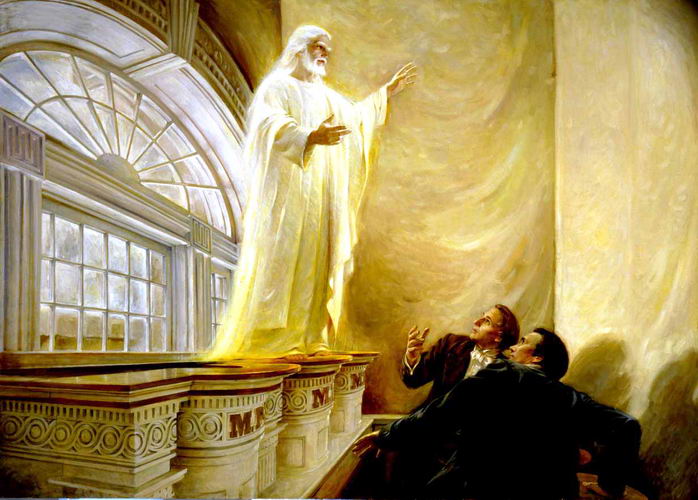 But is Joseph Smith’s spiritual
power to connect converts with heaven really beyond our
ability to investigate and understand? But is Joseph Smith’s spiritual
power to connect converts with heaven really beyond our
ability to investigate and understand?
Over the
last 50 years Joseph Smith-like spiritual power has come under
examination by an ever increasing number of anthropologists,
religious historians, ethnobotanists and ethnomycologists. It
now appears that spiritual power comparable to that of Joseph
Smith can be acquired in the course of consuming visionary
plants, mushrooms and cactus. Otherwise known as psychedelics
and hallucinogens, when these visionary materials are taken in
a religious setting, they are often referred to as entheogens.
An entheogen is any substance, such as a plant or
drug, taken to occasion a heavenly vision or spiritual
rapture.
How
important are entheogens to the world’s great religions?
Robert C. Fuller, a leading historian and interpreter of
American religious life writes that the use of entheogens
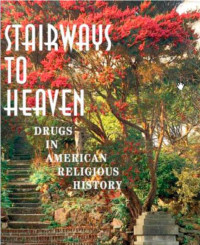 … is one of the most mysterious and
important subjects in all religious history. Entheogens have
figured prominently in the mystical practice of some of the
world’s greatest civilizations. They have been widely
employed4 in shamanic society and their use continues today
throughout the world. They alter consciousness in such a
profound way, that … their effects can range from states
resembling psychosis to what are perhaps the ultimate human
experiences, union with god or revelations of other mystical
realities. (Robert C. Fuller. Stairways to
Heaven: Drugs in American Religious History. Boulder, Colo.:
Westview. 2000. as quoted in Stephen Hoeller,
Misca-06) … is one of the most mysterious and
important subjects in all religious history. Entheogens have
figured prominently in the mystical practice of some of the
world’s greatest civilizations. They have been widely
employed4 in shamanic society and their use continues today
throughout the world. They alter consciousness in such a
profound way, that … their effects can range from states
resembling psychosis to what are perhaps the ultimate human
experiences, union with god or revelations of other mystical
realities. (Robert C. Fuller. Stairways to
Heaven: Drugs in American Religious History. Boulder, Colo.:
Westview. 2000. as quoted in Stephen Hoeller,
Misca-06)
Just how
legitimate are visions and raptures occasioned by entheogens?
Religious historian Huston Smith wrote that the use of
entheogenic material is able to occasion an “experience that
is indistinguishable from, if not identical with” those of
religious mystics. (http://www.psychedelic-library.org/books/ecstatic5.htm)
For
instance, in an article published in Life Magazine May 13th
1957, R. Gordon Wasson, the “father of ethnomycology”,
reported the discovery of a divine mushroom that could easily
occasion visions and ecstasies.
Wasson
wrote,
On the
night of June 29, 1955… I shared with a family of Indians a
celebration of "holy communion" where "divine" mushrooms
where first adored and then consumed. (http://www.imaginaria.org/wasson/life.htm)
Wasson
then reports,
Now I am
seeing for the first time, seeing direct, without the
intervention of mortal eyes … vistas beyond the horizons of
this life, to travel backwards and forwards in time, to
enter other planes of existence, even to know God. (Smith, H. (2003). Cleansing the Doors of Perception:
The Relligious Significance of Entheogenic Plans and
Chemicals. Boulder Colorado: Sentient Publications. P.
52)
In 1961,
Huston Smith ingested peyote cactus and made a similar report.
I noted
mounting tension in my body that turned into tremors in my
legs … I [began] experiencing … the clear, unbroken Light...
I was now seeing … with the force of the sun, in comparison
with which everyday experience reveals only flickering
shadows in a dim cavern… [I saw] worlds within worlds. (Smith, H. (2000). Cleansing the Doors of
Perception: The Religious Significance of Entheogenic Plans
and Chemicals. Boulder, Colorado: Sentient Publications. p.
10-11)
The result
has been a maturing theory of entheogens and the origins of
religion. In September 2006, Michael S. Hoffman summarized
what is now believed by many to be the relationship between
religion and entheogens. The entheogen theory of religion
holds that the main origin and ongoing wellspring of religion
is visionary plants… [such as] Peyote … Datura … and Amanita
muscaria mushrooms. Visionary plants have been commonly used
around the world throughout the history of religion and
culture, including the various forms of Western Esotericism.
(Michael S. Hoffman. Entheogenic Theory of
Religion and Ego Death. September 24, 2006 Salvia Divinorum
Magazine, Issue 4)
Greek and
Christian mythic-religious systems often refer to visionary
plants. (Ruck, Staples, & Heinrich
2001)
If
entheogens can shed light on some of the world’s most
important religions, including possibly early Christianity, is
it possible that they may also shed light on the rise of
Mormonism, America’s most successful religion? In order to
address this question, it seems reasonable to consider the
motive, opportunity and evidence to suggest that Joseph Smith
employed entheogens to occasion heavenly visions and spiritual
rapures.
What would
motivate Joseph Smith to use entheogens?
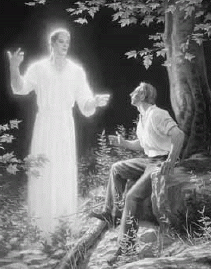 One possible answer is that without
entheogens, most visions and raptures come only after years of
disciplined meditation or severe physical
austerity. One possible answer is that without
entheogens, most visions and raptures come only after years of
disciplined meditation or severe physical
austerity.
Ake
Hultkranz, retired professor of comparative religion explains
that the popularity of entheogens … is partly due to the fact
that visions are rendered easily accessible, and fasting,
isolation, and self-torture are unnecessary. (Hultkrantz, A. (1967). The Religions of the
American Indians. Berkeley, Callifornia: University of
California Press. P. 153)
It is
becoming apparent that meditation, fasting and religious
ceremony are not the primary causes of visionary states and
spiritual raptures but instead play a supportive role for the
use of entheogens. Michael Hoffman notes Meditation, shamanic
drumming, and liturgical ritual were developed as activities
to do in the plantinduced [visionary] state, not as methods of
inducing the [visionary] state in the first place. (Michael S. Hoffman. Entheogenic Theory of Religion
and Ego Death. September 24, 2006 Salvia Divinorum Magazine,
Issue 4)
In other
words, if Joseph Smith employed entheogens, he met the
requirement to place himself and early Mormon converts in the
express lane to spiritual powers without the need for years of
meditation, repetitive religious ritual or severe physical
austerities.
Joseph Smith's
Access and Training in Entheogens
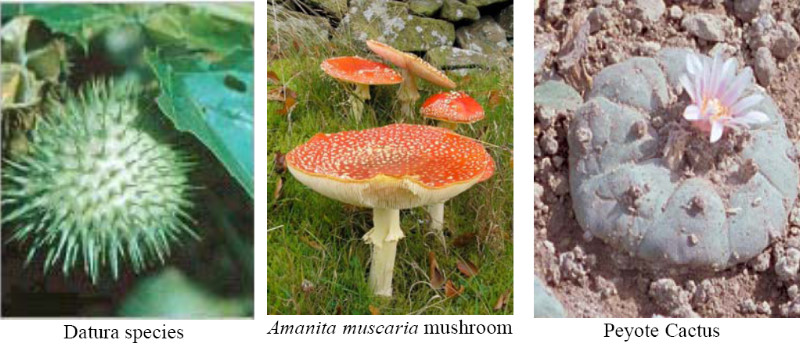
How
available were entheogens to Joseph Smith? In 1998, Richard
Evans Schultes, former director of the Botanical Museum of
Harvard University and the “father of ethnobotany” identified
three culturally important entheogens available in the area
Joseph lived and traveled: Datura plant, Amanita muscaria
mushroom and peyote cactus.
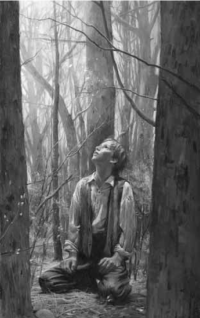 C. Jess Groesbeck has shown that the
model of Joseph Smith as a shamanic personality is a
comprehensible way to understand and embrace Joseph’s life and
work. (C. Jess Groesbeck. The Shaman’s
Visions. Sunstone Symposium 1985; Joseph Smith And The
Translation Of The Book Of Mormon, A Huichol Indian
Parallel) C. Jess Groesbeck has shown that the
model of Joseph Smith as a shamanic personality is a
comprehensible way to understand and embrace Joseph’s life and
work. (C. Jess Groesbeck. The Shaman’s
Visions. Sunstone Symposium 1985; Joseph Smith And The
Translation Of The Book Of Mormon, A Huichol Indian
Parallel)
Algonquin
Indian shamans inhabiting the region from the Atlantic
seaboard running north through eastern and central Canada and
south to the Ohio River are known to have used both Datura
plant and Amanita Muscaria mushroom in their religious
ceremonies. (http://www.erowid.org/library/books_online/golden_guide/g141-150.shtml)
Since Jess
Groesbeck has shown that many aspects of Joseph Smith’s
visionary career is consistent with Amerindian shamanism, it
is possible that Joseph Smith was mentored by an Algonquin
shaman.
John
Heinerman has demonstrated Joseph Smith’s interest in
Thomsonian herbal medicine. Thomsonian medicine was inspired
by early American root doctors using magical plants to
occasion cures. According to Catherine Yronwode, “root
doctoring” is an admixture of the hoodoo magical practices of
African-American slaves mingled with the botanical knowledge
of the Amerindian medicine man. (http://www.luckymojo.com/hoodooherbmagic.html)
Root
doctors are known to have used the visionary Datura plant in
their magical practices. (http://www.ubersite.com/m/82759)
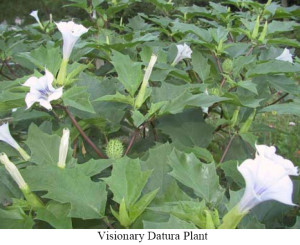 A possible mentor for Joseph Smith in the
use of Datura was Black Pete. Black Pete, an African-American
was called a revelator and a chief suggesting that he was also
a root doctor. Black Pete was initially from Pennsylvania and
in 1825 may have met the young Joseph Smith digging for buried
treasure. After leaving Pennsylvania, Black Pete became one of
the earliest converts in Kirtland Ohio joining the Church in
early 1831. A possible mentor for Joseph Smith in the
use of Datura was Black Pete. Black Pete, an African-American
was called a revelator and a chief suggesting that he was also
a root doctor. Black Pete was initially from Pennsylvania and
in 1825 may have met the young Joseph Smith digging for buried
treasure. After leaving Pennsylvania, Black Pete became one of
the earliest converts in Kirtland Ohio joining the Church in
early 1831.
As an
early convert to Mormonism, Black Pete was described as "a
chief man" who was "sometimes seized with strange vagaries and
odd conceits." On at least one occasion Pete fancied he could
"fly" and later recollections have him chasing "a ball that he
said he saw flying in the air" or "revelations carried by a
black angel." (Dialogue, Vol.12, No.2,
p.24)
Black Pete
was present during the Kirtland visionary period of early 1831
when the strange manifestations likely associated with Datura
plant ingestion were particular pronounced. (Bushman, R. L. (2005). Joseph Smith: Rough Stone
Rolling. New York: Alfred A. Knopf. P. 107,
131)
LDS
Historians D. Michael Quinn and Lance S. Owens have shown that
Joseph Smith incorporated elements of ceremonial magic and
alchemy imported from Europe. (Bushman, R. L.
(2005). Joseph Smith: Rough Stone Rolling. New York: Alfred A.
Knopf. P. 107, 131)
Alchemists
are believed to have employed the visionary Amanita
muscaria mushroom in their occult practices and historian
Lance Owens identifies a possible alchemical mentor for Joseph
Smith by the name of Dr. Luman Walter. Owens
explains:
Dr.
Walter was a distant cousin of Smith's future wife [Emma]
and a member of the circle associated with Smith's early
treasure quests. By contemporary reports he was not only a
physician, but a magician and mesmerist who had traveled
extensively in Europe to obtain "profound
learning"--probably including knowledge of alchemy,
Paracelcian medicine, and hermetic lore. (Lance Owens
1994a.)
Opportunities to
Administer Entheogens
Is there
evidence to suggest that Joseph Smith gifted new converts with
visionary experience by adding a visionary plant such as
Datura to sacramental wine? According to LaMar Petersen in his
1975 book, Hearts Made Glad the answer is probably yes. (Petersen, L. (1975). Hearts Made Glad: The Charges
of Intemperance Against Joseph Smith the Mormon Prophet. Salt
Lake City, Utah: p. 90.)
Petersen
noted a correlation in early Mormonism between the ingestion
of sacramental wine and visionary experience. In the very
first conference of the Church in June 1830 at Fayette, New
York, Joseph Smith recorded
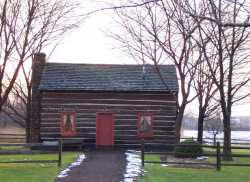 … we partook together of the
emblems of the body and blood of our Lord Jesus Christ … and
the Holy Ghost was poured out upon us in a miraculous manner
many of our members prophesied, whilst others had the
heavens opened to their view, and were so overcome that we
had to lay them on beds, or other convenient places: among
the rest was brother Newel Knight, who had to be placed on a
bed, being unable to help himself. ... He saw the heaven
opened, and beheld the Lord Jesus Christ seated at the right
hand of the Majesty on high ... When bodily
strength was restored to these brethren, they shouted
`Hosannas to God and the Lamb,' and rehearsed the glorious
things which they had seen and felt, whilst they were yet in
the spirit. (Times and Seasons, Vol.4, No.2,
p.22-p.23) … we partook together of the
emblems of the body and blood of our Lord Jesus Christ … and
the Holy Ghost was poured out upon us in a miraculous manner
many of our members prophesied, whilst others had the
heavens opened to their view, and were so overcome that we
had to lay them on beds, or other convenient places: among
the rest was brother Newel Knight, who had to be placed on a
bed, being unable to help himself. ... He saw the heaven
opened, and beheld the Lord Jesus Christ seated at the right
hand of the Majesty on high ... When bodily
strength was restored to these brethren, they shouted
`Hosannas to God and the Lamb,' and rehearsed the glorious
things which they had seen and felt, whilst they were yet in
the spirit. (Times and Seasons, Vol.4, No.2,
p.22-p.23)
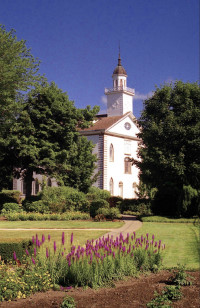 Heavenly manifestations occurred in a
March 18th 1833 sacrament meeting held in Kirtland Ohio under
the direction of Joseph Smith. Heavenly manifestations occurred in a
March 18th 1833 sacrament meeting held in Kirtland Ohio under
the direction of Joseph Smith.
Bro
Joseph … promise[d] that the pure in heart that were present
should see a heavenly vision … after which the bread
and wine was distributed by Bro Joseph after which many of
the brethren saw a heavenly vision of the savior and
concourses of angels, and many other things, of which each
one has a record of what he saw. (LDS History of the Church, Vol I. p. 283.,
Kirtland High Council Minutes (December 1832–November 1837).
P. 16-17)
In the
afternoon of March 27th 1833, Ebenezer Robinson reported that
after the administration of the bread and wine
Frederick G. Williams bore record that a holy angel of God
came and sat between him and Joseph Smith, Senior.
(http://www.boap.org/LDS/Early-Saints/ERobinson.html)
A meeting
in which visions were occasioned by the application of
anointing oil, which can also be laced with
entheogenic material occurred on January 21, 1836.
Joseph Smith was anointed first and in turn he anointed
several of the Brethren. Joseph reported that after
the anointing, The heavens were opened upon us and I beheld
the celestial kingdom of God, and the glory thereof, whether
in the body or out I cannot tell… Joseph said that many of the
brethren “saw glorious visions also.
(Joseph Smith Journal, Jan. 21, 1836, in PJS, 2:157-58;
Bushman, R. L. (2005). Joseph Smith: Rough Stone Rolling. New
York: Alfred A. Knopf. P. 312,313)
Joseph
Smith's 1833 "School of the Prophets" was also a place where
fasting, wine and vision went together. One participant later
described the visions during the School of the
Prophets:
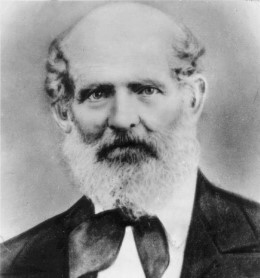 The brethren always went fasting; they
went in the morning, remained until about four o'clock in
the afternoon, when each had a glass of
wine and piece of bread, after the ancient pattern.
At every meeting the washing of feet was attended to. The brethren always went fasting; they
went in the morning, remained until about four o'clock in
the afternoon, when each had a glass of
wine and piece of bread, after the ancient pattern.
At every meeting the washing of feet was attended to.
At one
of these meetings after the organization of the school,
[Spring 1833] when we were all together ... a
personage walked through the room from east to west, and
Joseph asked if we saw him. I saw him and suppose the others
did and Joseph answered, "that is Jesus, the Son of God, our
elder brother."
Another person
came through; he was surrounded as with a flame of fire. He
(Brother Coltrin) experienced a sensation that it might
destroy the tabernacle as it was of consuming fire of great
brightness. The Prophet Joseph said, "this was the Father of
our Lord Jesus Christ." I saw Him. And the sensation was so
powerful that it thrilled through my whole system and I felt
it in the marrow of my bones. The Prophet Joseph said:
Brethren, now you are prepared to be the apostles of Jesus
Christ, for you have seen both the Father and the
Son.
This
appearance occurred about two or three weeks after the
opening of the school. After the Father had passed through,
Joseph told us to again take our positions in prayer. We did
so, and in a very short time he drew our attention and said
to us that Brother Reynolds Cahoon was about to
leave us, and told us to look at him. He (Brother Cahoon)
was on his knees and his arms were extended, his hands and
wrists, head, face and neck down to his shoulders were as a
piece of amber, clear and transparent, his blood having
apparently left his veins. Upon the attention of
the brethren being thus called to Brother Cahoon, the change
seemed to pass away and Joseph said that in a few minutes
more, Brother Cahoon would have left us, but he came to
himself again. (Minutes, Salt Lake City
School of the Prophets, October 3,
1883)
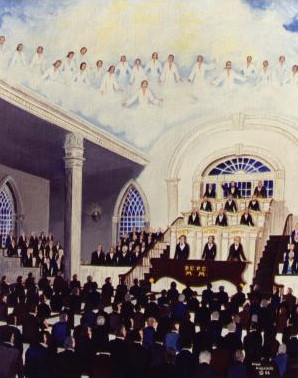 On March 30, 1836 during the dedication
week of the Kirtland temple the Millennial Star reported that
nearly five hundred brethren gathered in expectation of a
spiritual Pentecost. On March 30, 1836 during the dedication
week of the Kirtland temple the Millennial Star reported that
nearly five hundred brethren gathered in expectation of a
spiritual Pentecost.
The bread and
wine were then brought in… The Savior made His appearance to
some, while angels ministered to others. (Millennial Star 15:726-728. See also Lamar Petersen,
Hearts Made Glad, Salt Lake City Utah 1975, p. 124-125. See
also http://restorationbookstore.org/prints/kirtlandtempleded.htm)
Elder
Charles L. Walker recorded that when the brethren had …
partaken of the Lord's supper, namely a piece of bread as big
as your double fist and half a pint of wine in the
temple … the Holy Ghost descend upon the heads of those
present like cloven tongues of fire. ("Diary of Charles L. Walker," 1855-1902, excerpts
typed, 1969, p.35.)
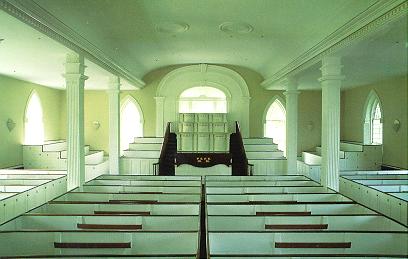 Church member Elder Zebedee Coltrin
testified: Church member Elder Zebedee Coltrin
testified:
In
Kirtland Temple, I have seen the power of God as it was in
the day of Pentecost! and cloven tongues as of fire have
rested on the brethren and they have spoken with other
tongues as the spirit gave them utterance. I saw the
Lord high and lifted up and frequently throng the solemn
assemblies, the angels of God rested on the temple, and we
heard their voices singing heavenly music. At another time
when consecrating some oil, we saw visibly the finger of God
enter the mouth of the bottle.
(Minutes of High Priest Meeting, Spanish Fork, Utah,
February 5, 1870)
Following
consumption of sacramental bread and wine on the afternoon of
April 3rd 1836, Joseph Smith and Oliver Cowdery retired to the
pulpit where a series of visions were opened to them
including the appearance of Jesus Christ, Moses, Elias and
Elijah. (History of the Church
2:434-435. See also Notes and Comments, BYU Studies, vol. 15
(1974-1975), Number 4 - Summer 1975 551.) D&C
110.
Then in a
meeting on May 1st 1836, Times and Season's Editor, Elder
Ebenezer Robinson, remembered
…
when we partook of consecrated bread and wine … some
testified of having the visions of heaven opened to their
view. (Ebenezer Robinson, “Items
of Personal history of the Editor,” The Return, I (June,
1889), 88-91. As found in Lamar Petersen, Hearts Made Glad,
Salt Lake City Utah 1975, p. 139. Also found at http://www.boap.org/LDS/Early-Saints/ERobinson.html)
Can
untainted wine and pure anointing oil have occasioned heavenly
visions or spiritual raptures of early Church converts? The
answer is probably not. Alcohol related hallucinations only
occur after years of abuse and abrupt withdrawal. Therefore
visions associated with the ingestion of wine argue
strongly for the surreptitious inclusion of an
entheogen such as the visionary Datura
plant.
Evidence of Dantra
Use in Early Mormonism
 What evidence is there that the plant
Datura occasioned early Mormon convert visions rather than
hypnosis, mass hysteria or spontaneous religious experience?
Datura has been shown to be over 80 percent effective in
creating a visionary experience whereas hypnosis is much less
reliable, probably less than 10 percent. An even smaller
percentage, likely less than 1 percent, will experience
spontaneous heavenly visions. Datura would not only account
for the high percentage of early Church converts having
visionary experience following the ingestion of sacramental
wine, but may also explain the accompanying untamed thoughts
and behaviors that attended early Mormon sacrament
meetings. What evidence is there that the plant
Datura occasioned early Mormon convert visions rather than
hypnosis, mass hysteria or spontaneous religious experience?
Datura has been shown to be over 80 percent effective in
creating a visionary experience whereas hypnosis is much less
reliable, probably less than 10 percent. An even smaller
percentage, likely less than 1 percent, will experience
spontaneous heavenly visions. Datura would not only account
for the high percentage of early Church converts having
visionary experience following the ingestion of sacramental
wine, but may also explain the accompanying untamed thoughts
and behaviors that attended early Mormon sacrament
meetings.
Lamar
Petersen noted that the drinking of sacramental wine in the
early days of the Church occasioned “unusual spiritual
manifestations” of such a shocking nature they “impaired the
image of the young Church among sober people.” (Hearts Made Glad, Salt Lake City Utah 1975, p.
79)
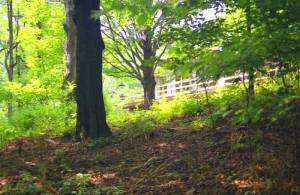 In early 1831, sacrament meetings
held at the Kirkland Ohio farm of Isaac Morley produced both
visions and scandalous behavior. A Kirtland Ohio
schoolteacher, Jesse Moss observed They partook of the Lords
supper at night with darkened windows and excluded from the
room all but their own till they got through and then opened
the doors and called the outsiders in to witness a scene far
exceeding the wildest scene ever exhibited among the
Methodists. (J. J. Moss letter to J. T. Cobb
dated Dec. 17, 1878. Found at http://solomonspalding.com/docs/Wil1878a.htm) In early 1831, sacrament meetings
held at the Kirkland Ohio farm of Isaac Morley produced both
visions and scandalous behavior. A Kirtland Ohio
schoolteacher, Jesse Moss observed They partook of the Lords
supper at night with darkened windows and excluded from the
room all but their own till they got through and then opened
the doors and called the outsiders in to witness a scene far
exceeding the wildest scene ever exhibited among the
Methodists. (J. J. Moss letter to J. T. Cobb
dated Dec. 17, 1878. Found at http://solomonspalding.com/docs/Wil1878a.htm)
What were the wild scenes
associated with early Mormon administration of sacramental
wine?
| Reporter |
Undisciplined
Scenes |
George A.
Smith
Conference
Address, Tabernacle Ogden City, on Tuesday, November 15,
1864
|
- Unnatural
distortions
- Extravagant and
wild ideas
|
David
Whitmer
Found in Lamar Petersen,
Hearts Made Glad, Salt Lake City Utah 1975, p. 81
|
- Wielded the sword
of Laban as expertly as a light dragoon
- Acted like an
Indian in the act of scalping
- Slid on the floor
with the rapidity of a serpent, sailing in boats to
preach to the Lamanites.
|
Parley P.
Pratt
Bushman, R. L. (2005). Joseph
Smith: Rough Stone Rolling. New York: Alfred A. Knopf.
p. 151 |
- Swoons
- Unseemly
gestures
- Cramps
- Falling into
ecstasies
|
Joseph
Smith
History of the Church. IV
(April 1, 1842), 580. Also
see George A. Smith’s account of Joseph Smith
description.
|
- Members acting
with insanity
- Members immovable
as if bound hand and foot in chains
- Getting on the
stumps of trees and shouting
- Pursuing balls
flying in the air and jumping off a cliff.
|
George A.
Smith reported that members in Kirtland manifested unnatural
distortions and extravagant and wild ideas.
David
Whitmer said that members wielded the sword of Laban as
expertly as a light dragoon, behaved like Indians in the act
of scalping, slid on the floor with the rapidity of a serpent,
sailed in boats to preach to the Lamanites.
Parley P.
Pratt reported swoons, unseemly gestures, cramps and falling
into ecstasies.
Joseph
Smith himself noted manifestations of insanity, members
becoming immovable as though bound hand and foot.
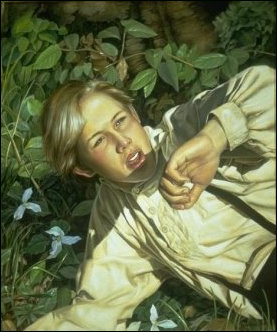 Joseph Smith reportedly was not present
at these Kirtland meetings and disavowed the manifestations as
being of a lying spirit. However, Joseph Smith’s own first
vision story depicts similar strange thoughts and behaviors.
Eldon Watson who harmonized Joseph’s nine accounts of the
first vision notes the following aberrations from normal
thinking and bodily function. (http://eldenwatson.net/harmony.htm) Joseph Smith reportedly was not present
at these Kirtland meetings and disavowed the manifestations as
being of a lying spirit. However, Joseph Smith’s own first
vision story depicts similar strange thoughts and behaviors.
Eldon Watson who harmonized Joseph’s nine accounts of the
first vision notes the following aberrations from normal
thinking and bodily function. (http://eldenwatson.net/harmony.htm)
Joseph’s tongue
would not function, he heard strange sounds and sprang to his
feet but saw nothing, he was seized upon and could not move,
his vision was severely impaired, he saw all kinds of
“improper pictures”, he believed he was going to be destroyed,
he felt a peculiar sensation course through his entire body,
he lost consciousness and awoke to find himself sprawling on
his back and was unable to get up for some
time.
Joseph
Smith personified these strange manifestations as the actions
of a being from the unseen world. This is consistent with
Joseph’s analysis of the bizarre manifestations in 1831
Kirtland Ohio as being the responsibility of a lying spirit.
However, Joseph would contradict this view in 1843 when he
explained that evil spirits can neither manipulate the
physical world nor occasion strange physical manifestations.
Joseph explained to apparently worried Church members that if
such a being was encountered and attempted to physically
interact, nothing at all would be felt. (History of the Church 5:26749)
Rather
than the devil being responsible for the peculiar
manifestations attending the first vision and early Church
convert visions, it is much more likely that Datura plant was
involved.
Clinical Effects
of Datura Correlation with LDS Visions
| Clinical
Effects of Datura |
Correlation
with LDS Visions |
| Hallucinations
(83%) |
Visions |
| Pupil
Dilatation |
Blindness |
| Dry
mucus membranes |
Dry
mouth, can’t speak |
| Vasomotor
instability |
Facial color changes
(initially flushed, then white as blood pressure
falls) |
| Delirium, paranoia
(central stimulation) |
Unfounded fears,
feeling of impending death, acting like or preaching to
Indians, crawling,
wallowing, chasing balls flying
through the air. |
| Muscle
abnormalities(jerks, myclonic movements,
choreoathetosis) |
Facial and body
contortions, feeling bound |
| Unconsciousness
(central depression) |
Coma |
| Onset: 1-4 hours
Duration: 24-48 hours |
Experiences lasted
hours to days. |
As noted
above, datura is over 80% reliable in occasioning
hallucinations and visions. It also causes pupil dilatation
and near blindness, dry mucus membranes making it difficult to
speak; vasomotor instability with the face initially turning
red then white as blood pressure falls; delirium including
acting out inner visions and paranoid ideation; abnormal
muscle movements including jerks and contortions and finally
unconsciousness. Symptom onset is usually less than an hour
and can continue for as long as two days.
The
Independent Messenger published in Worchester,
Massachusetts reported on May 27th 1831 that
Some [LDS Church
members] lie in trances a day or two and visit the unknown
regions in the meantime; some are taken with a fit of
terrible shaking which they say is the power of the Holy
Ghost. (Petersen, L. (1975).
Hearts Made Glad: The Charges of Intemperance Against Joseph
Smith the Mormon Prophet. Salt Lake City, Utah: p.
81.)
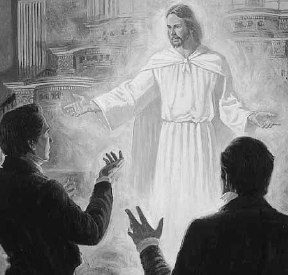 In an early June 1831 Kirtland sacrament
meeting, Joseph Smith alluded to possible mass visions and
outright promised Lyman Wight that he would see Christ that
day. Church historian Bushman explains what happened
next: In an early June 1831 Kirtland sacrament
meeting, Joseph Smith alluded to possible mass visions and
outright promised Lyman Wight that he would see Christ that
day. Church historian Bushman explains what happened
next:
Wight
turned stiff and white, exclaiming that he had indeed viewed
the Savior… Joseph Smith himself said, “I now see
God, and Jesus Christ”… Then Harvey Whitlock … turn
as black as Lyman was white… his fingers were set like
claws. He went around the room and showed his hands
and tried to speak, his eyes were the shape of ovals “O’s”…
[Then] Leman Copley, who weighed over two hundred pounds,
somersaulted in the air and fell on his back over a bench…
[Similar behavior was manifested by] people all day and the
greater part of the night. (Bushman, R. L. (2005). Joseph Smith: Rough Stone
Rolling. New York: Alfred A. Knopf. P.
156-157)
In the
Independent Gazetter published in Taunton,
Massachusetts on January 11, 1833 it was reported that “in a
few hours at a single meeting” there would be
…
shoutings, wailing, fallings, contortions, trances,
visions, speaking in unknown tongues and prophesying. ...
And we were frequently eye-witnesses to scenes of strange
and unnatural conduct of Mormons, professedly under the
influence of the spirit, that staggered the disbelief of the
most stable and incredulous. (http://www.sidneyrigdon.com/dbroadhu/NE/miscne01.htm)
John W.
Gunnison who interviewed Church elders present during the 1836
Kirtland Pentecost reported that wine was administered
… that had been
consecrated, and declared by the Prophet to be harmless and
not intoxicating. This… produced unheard of
effects, if we may credit the
witnesses of these proceedings. Visions, tongues, trances,
wallowings on the ground, shoutings, weeping, and laughing,
the outpouring of prophecies… these, and other fantastic
things, were among 'the signs following' at Kirtland. (Leut. J.W. Gunnison: The Mormons, or, Latter-Day
Saints (Philadelphia: J.B. Lippincott & Col.: 1852, 107
as found in Lamar Petersen, Hearts Made Glad, Salt Lake City
Utah 1975, p. 133)
Joseph
Smith’s standard response was to attribute foul manifestations
to the adversary while the heavenly manifestations were
attributed to God. But a more reasonable explanation may be
that the visionary effects of Datura plant are frequently
accompanied by rather unnerving physical and psychological
side effects.
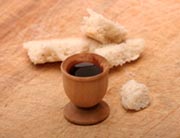 Some witnesses of these events
came to the conclusion that the sacrament had been laced with
a drug. On January 6, 1831, a letter to the editor in
the Palmyra Reflector accused Joseph Smith of legerdemain.
(Palmyra
Reflector, 6 Jan. 1831) Legerdemain means the
practice of using “psychology, misdirection and natural
choreography in accomplishing a magical effect.” In other
words, Joseph Smith was being accused of using the sacrament
as misdirection for the surreptitious administration of a
visionary substance. In 1843, Henry Caswell wrote of “a
pretended sacrament” associated with manifestations of power
in early LDS meetings. (Henry Caswall,
Prophet of the 19th Century, p. 63) Some witnesses of these events
came to the conclusion that the sacrament had been laced with
a drug. On January 6, 1831, a letter to the editor in
the Palmyra Reflector accused Joseph Smith of legerdemain.
(Palmyra
Reflector, 6 Jan. 1831) Legerdemain means the
practice of using “psychology, misdirection and natural
choreography in accomplishing a magical effect.” In other
words, Joseph Smith was being accused of using the sacrament
as misdirection for the surreptitious administration of a
visionary substance. In 1843, Henry Caswell wrote of “a
pretended sacrament” associated with manifestations of power
in early LDS meetings. (Henry Caswall,
Prophet of the 19th Century, p. 63)
After witnessing
several LDS sacrament meetings in Kirtland Ohio, Jesse Moss
“became fully satisfied the wine was medicated” and
one night attempted to steal a bottle but was caught.
Immediately after his attempt was discovered, Moss made a
public statement about how with drugged wine “angels could be
manufactured & strange wonders made to appear in the
night”. (J.
J. Moss to James T. Cobb, Dec. 17,
1878)
A member
of the Church by the last name of McWhithey was reportedly
present during the 1836 Kirtland temple dedication week.
Obviously disgruntled, McWhitney complained that the wine
consumed was actually "mixed liquor” and that “the Mormon
leaders intended to get the audience under [its] influence” so
that visions experienced were believed to be of “the Lord's
doings.” (Demming, Naked Truths (April,
1888), pp. 2-3. As found in Lamar Petersen, Hearts Made Glad,
Salt Lake City Utah 1975, p. 135)
The
connection of wine with fits of psychotic thinking and strange
physical manifestations attending heavenly visions and
spiritual raptures argues strongly in favor of the covert
inclusion of the visionary Datura plant in the sacramental
meal and anointing oil administered by Joseph Smith.
Amanita Muscaria
Mushroom
What about
Joseph Smith’s own use of entheogens? As noted, the psychotic
thinking and peculiar physical manifestations attending
Joseph’s first vision are compatible with Datura plant
ingestion. But another entheogen most likely was the
intoxicant involved.
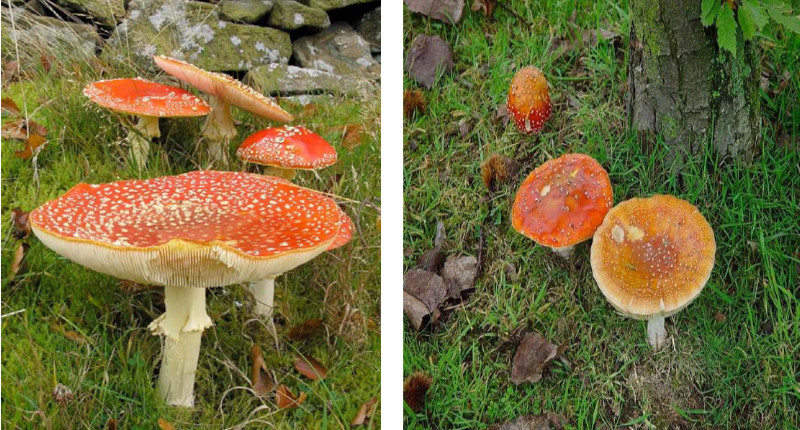
The
Amanita muscaria mushroom may be one of man's oldest
entheogens. According to Dan Merker, an academic with a
background in religious history, an entheogenic laced
sacrament existed in a Judaeo-Christian context. (Merkur, D. (2000). The Mystery of Manna: The
Psychedelic Sacrament of the Bible. Rochester, Vermont: Park
Street Press.)
Clark
Heinrich suggests there is evidence to believe the Amanita
muscaria mushroom may have played a role, along with
ergot fungus related to LSD, in occasioning the visions
reported by Old Testament prophets as well as being employed
in some early Christian Eucharist celebrations. (Clark Heinrich. Magic Mushrooms in Religion and
Alchemy. Park Street Press, Rochester Vermont 2002. See also
http://egodeath.com/.)
However,
these entheogens were not administered openly, but covertly
within a more benign substance such as wine and anointing oil.
To maintain secrecy, descriptions of Amanita muscaria
mushroom use were cloaked in allegory and metaphor.
.jpg)
The
Amanita muscaria mushroom, because of its changing form; its
symbiotic relationship with pines, oaks and birch trees; and
its profound visionary effect makes itself amenable to
mystical personification and simile. A few examples of the
Amanita Muscaria mushroom in various stages of life
underneath its host trees are shown above. In its newborn
state, it takes on the appearance of a small dazzling white
stone or particle; then a woolly lamb, a constellation of sun,
moon and stars, a brilliantly colored ground fruit; a winged
bird adorned with a string of pearls around its neck; a sun
disk radiating light in all directions; a gold plate upon
which is found strange writing and a serpent hanging on a
pole. According to those who have consumed this fruit, the
visionary state it produces occasions an endowment of divine
knowledge and celestial love.

This 13th
century Christian fresco from France shows an Amanita muscaria
mushroom as the tree of knowledge with Adam on the left and
Eve on the right. Notice the tree’s umbrella shaped branches
bearing white particles analogous to the veil remnants on the
caps of three Amanita muscaria mushrooms shown to its right.
Also, in the Christian fresco, the gold plates covering Adam
and Eve’s nakedness match the golden color of an aged Amanita
muscaria mushroom. Finally, the snake hanging on a pole in the
Christian fresco corresponds to a dying Amanita muscaria
mushroom that also has an appearance of a snake hanging on a
pole.
What is
remarkable about this early Christian pictographic simile of
the Amanita muscaria mushroom is its resemblance to
the dreams of Joseph Smith Sr. and the early visionary
experiences of Joseph Smith Jr.
In 1802,
Joseph Smith's father, Joseph Sr., gathered and crystallized
more than $3,000 worth of ginseng to sell in China. (Richard Bushman, 2005a. p. 18.)
Ginseng, although not a major entheogen, was “attributed with
secret and magical powers”. (Richard Evans
Schultes, A. H. a. C. R. (2001). Plants of the Gods: Their
Sacred, Healing, and Hallucinogenic Powers. Rochester,
Vermont: Healing Arts Press.)
The
ability to crystallize ginseng shows that Joseph Sr. was able
to work with psychoactive material, changing it into a stable,
storable form that could be administered at a later
time.
In
1811, Joseph Sr. reportedly had two dreams that are very
suggestive of the Amanita muscaria
mushroom.
In the
first dream, a spirit led Joseph Sr. to a box on the ground
containing an entheogenic material. Of the box, the spirit
said the contents of which, if you eat thereof, will make you
wise, and give unto you wisdom and understanding. (Biographical
Sketches of Joseph Smith the Prophet and His Progenitors.
Lamoni, Iowa: The Church of Jesus Christ of Latter Day Saints,
1912, reprinted 1969. P. 57-58.)
In the
next dream, Joseph Sr. was led to a tree whose “branches
spread themselves somewhat like an umbrella” and released
“particles … of dazzling whiteness” which fell to the ground.
When he partook of fruit lying on the ground, he experienced
something “delicious beyond description”. Then Joseph Sr. with
his family “got down upon [their] knees, and scooped [the
fruit] up, eating it by double handfuls”. (Biographical
Sketches of Joseph Smith the Prophet and His Progenitors.
Lamoni, Iowa: The Church of Jesus Christ of Latter Day Saints,
1912, reprinted 1969. P. 57-58.)

In 1830,
Joseph Smith Jr. published the Book of Mormon, which
contained another version of his father’s entheogen related
dreams. In an early chapter of the book, those who
held onto the rod of iron ultimately “fell down and partook of
the fruit of the tree” which represented the love of God. It
is not a far stretch to think that a single entheogen is being
described in these three related dreams.

The
points where the three dream stories appear to represent the
Amanita Muscaria mushroom
are:
- the
umbrella shape of the tree branches,
- the
brilliant white particles on the branches, appearing to
fall to the ground arguably appearing as small brilliant
white stones
- the
fruit that must be gathered from the ground, not plucked
from the branches of the tree as would be expected
- a
fruit that can either be eaten fresh or dried and stored
for later consumption
- a
magical fruit able to occasion visions and raptures
bestowing divine wisdom and heavenly love
The
Amanita muscaria mushroom not only fits the images
depicted in the Smith dreams, it also has the capacity to
reproduce the early visionary experiences reported by Joseph
Smith.
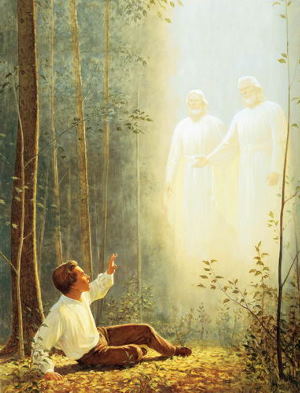 The 1832 account of the first vision,
written 12 years from when it reportedly occurred, had
undoubtedly already undergone significant revision. The core
event was arguably an experience of physical heaviness, visual
darkness, an awe-inspiring light from above, a voice out of
heaven, an experience with the unfathomable Godhead and
feelings of unspeakable joy. The 1832 account of the first vision,
written 12 years from when it reportedly occurred, had
undoubtedly already undergone significant revision. The core
event was arguably an experience of physical heaviness, visual
darkness, an awe-inspiring light from above, a voice out of
heaven, an experience with the unfathomable Godhead and
feelings of unspeakable joy.
Contemporary
visionary experience occasioned by entheogens show remarkable
similarity to that of Joseph Smith. For instance, a
few years ago, after ingesting the Amanita Muscaria
mushroom in the context of a Christian sacramental meal, Clark
Heinrich reports a Joseph Smith-like first vision. Heinrich
writes
I felt
like I weighed thousands of pounds and could no longer sit
up … in the midst of a great darkness and a great silence,
the heavens opened above my head. In an instant I was
flooded with light from above, light of the utmost whiteness
and splendor that quickly dissolved everything in its glory.
The bliss I had experienced prior to this new revelation now
paled to insignificance in an immensity of light that was
also the purest love. As the truth of the situation dawned
on me the word "FATHER" resounded in this heaven of light
and I was taken up and absorbed by the unspeakable Godhead.
(Clark Heinrich. Magic Mushrooms in
Religion and Alchemy. Park Street Press, Rochester Vermont
2002)
The
similarity of Heinrich’s vision to that of Joseph Smith’s is
remarkable including immobility, darkness, light appearing
from above, a voice out of heaven, an experience with the
Godhead and the feeling of indescribable joy. James Arthur
reports that the Amanita muscaria “mushroom is also a
symbiotic with the Birch tree, the trees which were in the
Sacred Grove”.
On another
occasion in which Amanita muscaria mushroom was
ingested in a sacramental setting, Heinrich reported an
experience reminiscent of the February 16, 1832 joint vision
of Joseph Smith and Sydney Rigdon. This singular vision was
manifested as they read from the Book of John.
Similarly, Heinrich and a friend partook of the sacred
Amanita Muscaria sacrament, opened the Bible
to the Book of John and reported having a singular
spiritual experience.
I picked
up a Bible from the bookshelf, opened to the
Book of John, and started reading aloud. What I had
before considered ridiculously partisan prose and poetry
(fiction really) was now revealed in a whole new light. It
became for us an [Amanita muscaria] initiation
document, speaking the living truth directly to us through
the mists of the centuries, uncovering layer after layer of
meaning artfully hidden in the text. We understood it all;
all the references, all the metaphors, all the hidden
wisdom… It was as though God had manifested from the book
and was addressing us directly. And we couldn't have been
happier. (Clark Heinrich. Magic Mushrooms
in Religion and Alchemy. Park Street Press, Rochester
Vermont 2002)
The
Amanita muscaria mushroom may also have played a role
in Joseph’s account of the Book of Mormon’s origin.
This sacred mushroom appears in the autumn of each year
coinciding with Joseph’s annual visits to the Hill
Cumorah.
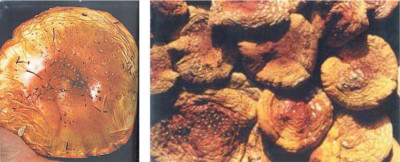 Importantly, Joseph told his wife and his
mother that he hid the gold plates in an oak and birch tree.
Interestingly, Amanita muscaria mushroom grows at the
feet of both trees. The sacred mushroom is born underneath a
tree as a small “pure brilliant white stone” which is then
transformed into a woolly lamb, then a brilliant red fruit; a
constellation of sun, moon and stars and finally a gold plate
upon which appears to be written strange hieroglyphs. On the
left is a freshly picked shiny gold Amanita muscaria
mushroom in its potent entheogenic form. The photo on the
right is a collection of dried gold Amanita muscaria mushrooms
that retain their entheogenic potency for up to a year. The
psychedelic component of Amanita Muscaria can be
easily extract by soaking it in water, which turns a faint
wine color from rosy red to faintly golden. Importantly, Joseph told his wife and his
mother that he hid the gold plates in an oak and birch tree.
Interestingly, Amanita muscaria mushroom grows at the
feet of both trees. The sacred mushroom is born underneath a
tree as a small “pure brilliant white stone” which is then
transformed into a woolly lamb, then a brilliant red fruit; a
constellation of sun, moon and stars and finally a gold plate
upon which appears to be written strange hieroglyphs. On the
left is a freshly picked shiny gold Amanita muscaria
mushroom in its potent entheogenic form. The photo on the
right is a collection of dried gold Amanita muscaria mushrooms
that retain their entheogenic potency for up to a year. The
psychedelic component of Amanita Muscaria can be
easily extract by soaking it in water, which turns a faint
wine color from rosy red to faintly golden.
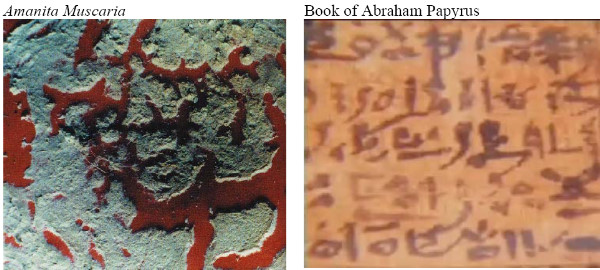
A
comparison of a photo of an Amanita Muscaria mushroom
on the left with hieroglyphics from an Egyptian manuscript
shows remarkable similarity. Amanita muscaria may also have
occasioned Joseph’s interest in translating. In a recent study
conducted in Britain, ingestion of Amanita Muscaria
mushroom stirred a member of the test group to spontaneously
translate an unknown language.
It also
appears that Joseph may have been inebriated while composing
the Book of Mormon. Martin Harris told A.C. Russell in 1834
that Joseph Smith was frequently intoxicated while
translating. (Church History
Chronology, Feb 12, 1834) It is possible that
Joseph was not intoxicated as much with wine as with
Amanita Muscaria mushroom.
In
addition to replicating aspects of Joseph Smith’s visions and
providing an allegorical story of gold plates upon which was
written reformed Egyptian, a visionary mushroom is able to
provoke Joseph Smith-like millennial zeal. In a 1962
experiment, visionary mushrooms were served to fifteen
volunteers. As the entheogen began to take effect, one
volunteer declared that he had been chosen by God “to announce
to the world the dawning of the Messianic Age, a millennium of
universal peace”. (Smith, H. (2000).
Cleansing the Doors of Perception: The Religious Significance
of Entheogenic Plans and Chemicals. Boulder, Colorado:
Sentient Publications.101 – 103)
Is
it too far-fetched to think Joseph Smith Joseph Smith would go
in the woods to find mushrooms and have visions? Some
accounts given by faithful church members come close to this
possibility, like this one recounted by a church
apostle:
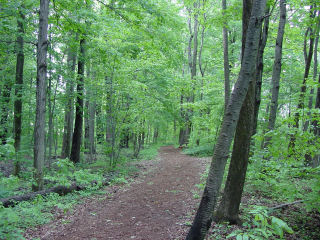 The party consisted of Presidents
Joseph Smith, Sidney Rigdon, Oliver Cowdery and myself
[Zebedee Coltrin]. ... Joseph seemed to have a far off look
in his eyes, or was looking at a distance and presently he,
Joseph, stepped between Brothers Cowdery and myself and
taking us by the arm, said, "Let's take a walk." We went to
a place where there was some beautiful grass and grapevines
and swampbeech interlaced. ... Brother Joseph then said,
"Now brethren, we will see some visions." Joseph lay down on
the ground on his back and stretched out his arms and the
two of us layed on them. The heavens gradually opened, and
we saw a golden throne, on a circular foundation, something
like a light house, and on the throne were two aged
personages, having white hair, and clothed in white
garments. They were the two most beautiful and perfect
specimens of mankind I ever saw. Joseph said, "They are our
first parents, Adam and Eve." Adam was a large,
broad-shouldered man, and Eve as a woman, was a large in
proportion. (Minutes, Salt Lake City School
of the Prophets, October 11,
1883.) The party consisted of Presidents
Joseph Smith, Sidney Rigdon, Oliver Cowdery and myself
[Zebedee Coltrin]. ... Joseph seemed to have a far off look
in his eyes, or was looking at a distance and presently he,
Joseph, stepped between Brothers Cowdery and myself and
taking us by the arm, said, "Let's take a walk." We went to
a place where there was some beautiful grass and grapevines
and swampbeech interlaced. ... Brother Joseph then said,
"Now brethren, we will see some visions." Joseph lay down on
the ground on his back and stretched out his arms and the
two of us layed on them. The heavens gradually opened, and
we saw a golden throne, on a circular foundation, something
like a light house, and on the throne were two aged
personages, having white hair, and clothed in white
garments. They were the two most beautiful and perfect
specimens of mankind I ever saw. Joseph said, "They are our
first parents, Adam and Eve." Adam was a large,
broad-shouldered man, and Eve as a woman, was a large in
proportion. (Minutes, Salt Lake City School
of the Prophets, October 11,
1883.)
In
conclusion, as Richard Bushman noted, it was Joseph Smith
himself that connected early Mormon converts to heavenly
visions and spiritual raptures by a power that he, himself
possessed. (Bushman, R. L. (2005). Joseph
Smith: Rough Stone Rolling. New York: Alfred A. Knopf. P.
560.)
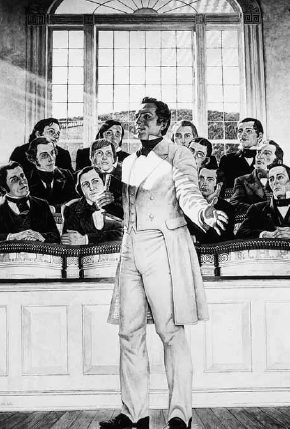 It is to the mystery of Joseph Smith’s
spiritual power that this presentation has addressed itself.
This presentation has theorized that the main origin and
ongoing wellspring of Joseph’s spiritual power was his skilled
utilization of the visionary Datura plant and the sacred
Amanita muscaria mushroom. In the
administration of these entheogens, Joseph Smith was able to
gift his followers with access to God and spiritual
dimensions without the years of fasting, isolation,
and self-torture employed by other mystic and spiritual
leaders. It is to the mystery of Joseph Smith’s
spiritual power that this presentation has addressed itself.
This presentation has theorized that the main origin and
ongoing wellspring of Joseph’s spiritual power was his skilled
utilization of the visionary Datura plant and the sacred
Amanita muscaria mushroom. In the
administration of these entheogens, Joseph Smith was able to
gift his followers with access to God and spiritual
dimensions without the years of fasting, isolation,
and self-torture employed by other mystic and spiritual
leaders.
If the
entheogen theory of the rise of Mormonism proves to be
correct, it is probable that if Joseph Smith had lived to
complete the Nauvoo temple, the visionary experiences
surrounding its dedication would have eclipsed those of the
Kirtland Pentecost in both glory and power.
Further,
there is reason to conjecture that if Joseph Smith had lived
to be 85 as he speculated he might, members would not have
been asking in 1864 “why it is that we do not see more angels,
have more visions, that we do not see greater and more
manifestations of power?”
>> Main Menu
|